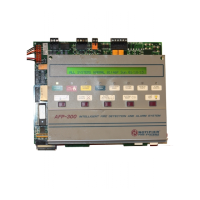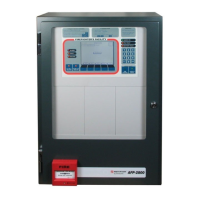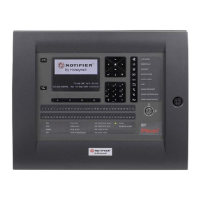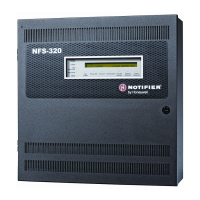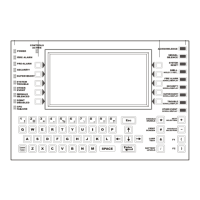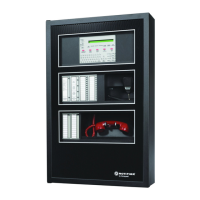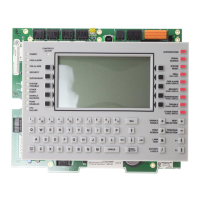AFP-3030 Operations Manual — P/N DOC-01-039:A 26/11/2015 24
Prealarm Event Operation of the Control Panel
2.3.4 Interpreting Type ID Codes
The Type ID code that displays in a point fault message is related to the type and function of the
point that initiates the fault. For example, a monitor module with a
PULL STATION Type ID code
means that the monitor module connects to a manual pull station. If the Type ID code is unfamiliar,
refer to Appendix A, “Software Type ID Codes”, on page 63. This appendix is an alphabetical list
of Type ID codes and an explanation of each.
2.4 Prealarm Event
The Pre-alarm function is used to receive an early warning of potential or incipient fire conditions.
The Pre-alarm function provides one of two settings as follows:
• Alert – a non-latching setting that causes a Prealarm when a detector reaches its programmed
Pre-alarm sensitivity threshold. Non-latching means the condition will automatically restore to
normal once the detector’s obscuration readings drop below its Prealarm threshold.
• Action – a latching setting that causes a Prealarm when a detector reaches its programmed
Pre-alarm level. Latching means the condition will not restore itself to normal once the
detector’s obscuration readings drop below its Prealarm threshold. The panel must be reset.
Alert and Action settings are set individually with detector point programming. Individual detector
sensitivity threshold settings can have a value of one through nine, and are set by the programmer.
A sensitivity threshold setting of zero indicates the detector does not participate in prealarm.
For more detailed information on Prealarm, refer to this panel’s programming manual.
2.4.1 How the Control Panel Indicates a Prealarm
When a detector activates a Prealarm, the control panel does the following if there are no higher
priority unacknowledged events:
• Pulses the panel sounder (if the piezo is enabled)
• Illuminates the
OTHER LED
•Displays
PREALARM in the upper left corner of the LCD, as well as the sensitivity reading, the
type code and other information specific to the detector as shown in Figure 2.5.
• Sends a Prealarm message to the History buffer, installed printer and annunciators.
PRIMARY AMP x OVERCURRENT The Primary Amplifier at address x has overloaded and shut down. Check the total Load calculations fir the
DS-AMP and/or DS-BDA and ensure the total values do not exceed 120 watts.
PRIMARY AMP x
TRIP The DS-BDA at DS-BUS address x (1-4) is drawing more current from the power supply than expected and
has been disabled. Refer to the DVC manual for additional troubleshooting.
PRINTER OFF LINE Communication loss with printer. Restore power and/or printer’s online status.
PRINTER PAPER OUT Add paper.
PROGRAM CORRUPTED The database that houses the panel’s programming is corrupt. It must be re-downloaded, or all programming
must be cleared and re-entered. Service required.
PROG MODE ACTIVATED A user is currently using the panel’s programming menus.
REMOTE DISPLAY x
NO ANSWER The remote display at address x is not responding.
REMOTE DISPLAY x
FAULT The remote display at address x is in fault.
REMOTE MIC FAULT The DVC’s remote microphone is in fault. It is installed and supervised, but no signal is coming from it.
Investigate and fix.
SELF TEST FAILED Diagnostic test failed. Call Technical Services.
SOFTWARE MISMATCH LCM and/or LCD-160 software does not match the version number expected by the panel; and/or the NCM is
not network version 5.0; and/or one or more DAAs has a software revision that does not match other DAA
software revisions. Update software as necessary.
SYSTEM INITIALIZATION One or more devices (detectors or modules) can not report activation. This can occur following system startup,
when exiting Walk Test, following an autoprogram, or following a device fault of No Response. Will clear when
all un-initialised devices are initialized.
VESDA FAULT A fault has occurred on a VESDA node. Possible faults may include: Communication failure on the VESDA
detector loop, incompatible VESDA software versions, or a VESDA configuration error.
* This fault may be fire panel or backup battery related. Test and replace backup batteries if necessary.
SYSTEM FAULTS
FAULT MESSAGE TYPE FAULT DESCRIPTION
Table 2.2 System Faults (3 of 3)

